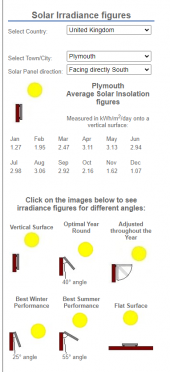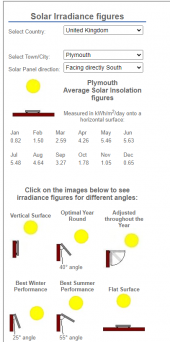Chadd
New Member
- Joined
- Jul 13, 2022
- Messages
- 92
Good evening which will produce the most Solar Panel output.
Mounted vertically on balcony railings facing south in Cornwall UK, or flat on a flat roof ?
While we wait for some new panels to arrive, we have a single panel laying flat horizontal on the south facing balcony.
It produces some output, I intend to mount the new panels on the south facing balcony railings angled upwards towards the sun.
Working out and constructing the angled mounts is proving problematic, so to get the system up and running, I wondered about mounting them vertical on the balcony railings for now which will be simple.
I can work out mounts to angle them towards the sun later
I did find some custom made balcony mounts but delivery is January : )
God Bless Chadd
Mounted vertically on balcony railings facing south in Cornwall UK, or flat on a flat roof ?
While we wait for some new panels to arrive, we have a single panel laying flat horizontal on the south facing balcony.
It produces some output, I intend to mount the new panels on the south facing balcony railings angled upwards towards the sun.
Working out and constructing the angled mounts is proving problematic, so to get the system up and running, I wondered about mounting them vertical on the balcony railings for now which will be simple.
I can work out mounts to angle them towards the sun later
I did find some custom made balcony mounts but delivery is January : )
God Bless Chadd




